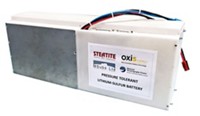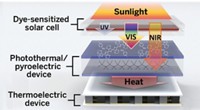Advertisement
Grab your lab coat. Let's get started
Welcome!
Welcome!
Create an account below to get 6 C&EN articles per month, receive newsletters and more - all free.
It seems this is your first time logging in online. Please enter the following information to continue.
As an ACS member you automatically get access to this site. All we need is few more details to create your reading experience.
Not you? Sign in with a different account.
Not you? Sign in with a different account.
ERROR 1
ERROR 1
ERROR 2
ERROR 2
ERROR 2
ERROR 2
ERROR 2
Password and Confirm password must match.
If you have an ACS member number, please enter it here so we can link this account to your membership. (optional)
ERROR 2
ACS values your privacy. By submitting your information, you are gaining access to C&EN and subscribing to our weekly newsletter. We use the information you provide to make your reading experience better, and we will never sell your data to third party members.
Environment
Energy Economics 101
January 16, 2012
| A version of this story appeared in
Volume 90, Issue 3
Following are comments on two articles in the Nov. 7, 2011, issue of C&EN (pages 8 and 9).
In “DOE Loan Program Scrutinized,” Jeff Johnson reports on another energy firm filing for bankruptcy and on the U.S. Administration’s decision to audit the Department of Energy’s loan program and its portfolio of $36 billion in loans and guarantees. Obviously, big misinvestments have occurred in the technical energy research sector.
In “Better Dye Yields Better Solar Cell,” Steve Ritter reports on academic research about a new sensitizer dye and redox mediator for photoelectrochemical solar cells. This article is likely to help the authors of said academic research get funding for the technical implementation of their device; that is, until they also must file for bankruptcy and their governmental energy-research-funding program is scrutinized.
I want to point out that all of our presently exploited energy technologies were born and raised to prosperity without governmental funding; rather, they grew up at the crossing point of need and technical feasibility. If the latter fails—if an energy research project is solely driven by need and funding—there is no feedback as to the technical viability of the developed technologies.
Economic viability must be taken into account at an early stage in an energy technology project, otherwise the latter is born dead. For example, in the case of the bankrupt flywheel energy storage company, early economic considerations would have led to the conclusion that hydroelectric energy storage is much cheaper to implement and much more reliable in operation. All that is needed to implement it are an upper and a lower water basin, an electric pump, and an electric generator—standard components obtainable from the electric power industry.
Economic viability considerations also apply to solar cells. Given the very dilute nature of solar energy, big collection surfaces are required to collect appreciable amounts of solar energy. The production price of the solar cell per surface unit must therefore be low, and the operating lifetime of the produced solar cell must be high. Just make a simple calculation:
◾ Solar irradiation amounts to 1 kW/m2 at orthogonal incidence.
◾ Silicon solar cells have a conversion yield between 10 and 15%, which gives an electrical yield of the solar cell under orthogonal incidence of 100–150 W/m2.
◾ At equinox, the total solar irradiation per day corresponds to about 7.5 hours of orthogonal incidence, which makes a total of 750–1,125 W/m2 per day.
◾ Taking 250 sunny irradiation days per year, the yield is in the range of 187–281 kWh/m2 per year.
◾ Taking a price of $0.25/ kWh, the solar cell yields between $47 and $70/m2 per year.
◾ Taking an amortization time of five years, the manufacturing cost of the solar cell must be in the range of not higher than $235–350/m2.
◾ The life span of the solar cell should be at least four to five times this amount; that is, 20 to 25 years to allow the cell to bring in a multiple of the cost spent for its manufacturing.
Now, after having gone through this calculation, please select an appropriate technology that is able to fit it!
By Edgar Müller
Prilly, Switzerland




Join the conversation
Contact the reporter
Submit a Letter to the Editor for publication
Engage with us on Twitter